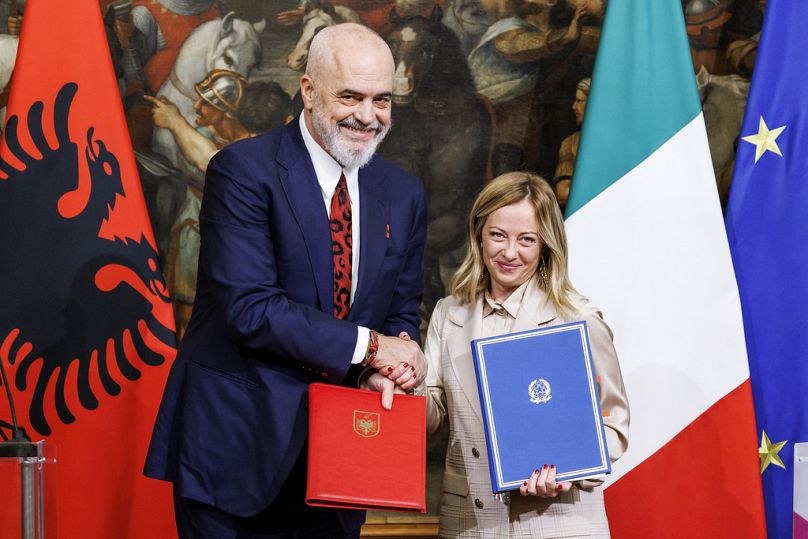The recent surge in migration caused by war and instability means those seeking shelter as migrants, refugees or asylum seekers are affecting the socioeconomic landscape of Europe and its countries in more ways than one, Osama Rizvi writes.
As some states fail to deliver security and safety to their citizens, a large number of people from those countries look to migrate to areas best suited to their social and economic interests.
The displaced are seeking shelter as migrants, refugees or asylum seekers, having a varying impact on the socioeconomic landscape of European countries.
The migrants are seen by some to be overwhelming the exchequers of governments unable to incorporate these new arrivals financially, resulting in short-term tax burdens through high social costs and low employment rates.
However, conversely, an argument can be made that the migrants can contribute constructively to fiscal benefits by entering the labour market and contributing to the public finances of such countries that can build capital structures to accommodate the increased labour supply.
What can we glean from statistics and other data on migration to the continent?
How many have come to Europe?
According to official reports, almost 3.5 million people migrated to the EU in 2022 as refugees with asylum status.
Additionally, some 4.2 million Ukrainians have been given temporary protection in EU member states since Russia's full-scale invasion of Ukraine in February 2022.
Maintaining their yearly record, the Syrians and Afghans continue to be the largest groups of asylum-seekers in the bloc, with around 100,000 applications submitted in 2023, according to the European Union Agency for Asylum.
The International Organisation for Migration's statistics show that a total of 213,896 migrants reached Europe in 2022. Migrants from several African countries such as Algeria and Libya have also been reported as looking for protection within Europe.
Every European country has a different approach towards the massive displacement.
After annual net migration hit a record of 745,000 in 2022, the British government announced plans to cut the number of migrants. Recently, France had a heated debate over the bill that toughened the rules for migrants.
Germany, too, is seeking to revise its migration policy after it received the largest number of asylum applications in 2023 and despite benefiting from the migrants in the labour sector.
Italy has seen a surge in seaborne migrants and is now planning to build two centres in Albania to host up to 36,000 migrants per year. Spain will also need to rethink the contours of its migration policy after receiving a record of 13,000 migrants because of political turmoil in Africa.
What are the benefits?
With the influx of as many migrants per year, many European countries are re-evaluating their migration policy to consider the political pressure and potential conflicts with their own citizens.
However, when it comes to talking about increasing the output of fiscal domain, most European countries see migrants as immigrants who can lift the economic stability of the country in the long term.
In the case of Germany, for example, the dwindling of the economy has led to the IMF predicting it to end up being the worst-performing major country in 2023. The lack of skilled workers has led to experts estimating the country will need 1.5 million immigrants each year to maintain its labour force.
Unlike most other states, Germany has kept its policies flexible to attract foreign labour.
With the fear of immigrants perceived by some as a threat to social cohesion and national identity, in other places, a paradigm shift has occurred in the past decade perceiving immigrants as assets to national labour markets and the welfare system, boosting economic development.
The inclusion of migrants in sectors such as healthcare, construction, agriculture and logistics can lead to profiting output reducing the economic strain and distress. The migrants have the potential to contribute to the public finances in the form of taxes and reciprocating the benefits that they receive.
Inbalances to keep in mind
According to a recent Frontex report, the number of illegal border crossings at the EU's external borders in 2023 reached approximately 380,000. This influx has led to cross-border crimes such as document fraud, human trafficking, and the smuggling of illegal goods and weapons.
Programmes of integrating migrants such as cultural orientation and language training sessions can be a strain on government budgets as the cost is initially carried by the host country.
The increase in migration can result in a high demand for housing in the construction sector leading to higher property prices and rents. This cause and effect will not only influence the life of the migrant but will also have grave repercussions on the residents.
In Europe, all member states are characterised by a high degree of economic benefits, rule of law and political stability.
In contrast, the populations of other countries around the world face some degree of authoritarianism and instability, leading them to opt for migration.
These imbalances explain why Europe is — and will continue to be — a major destination for migrants, even in times of dormant economic growth.
Osama Rizvi is an economic and energy analyst with a focus on commodities, macroeconomy, geopolitics, and climate change.
At Euronews, we believe all views matter. Contact us at view@euronews.com to send pitches or submissions and be part of the conversation.




















